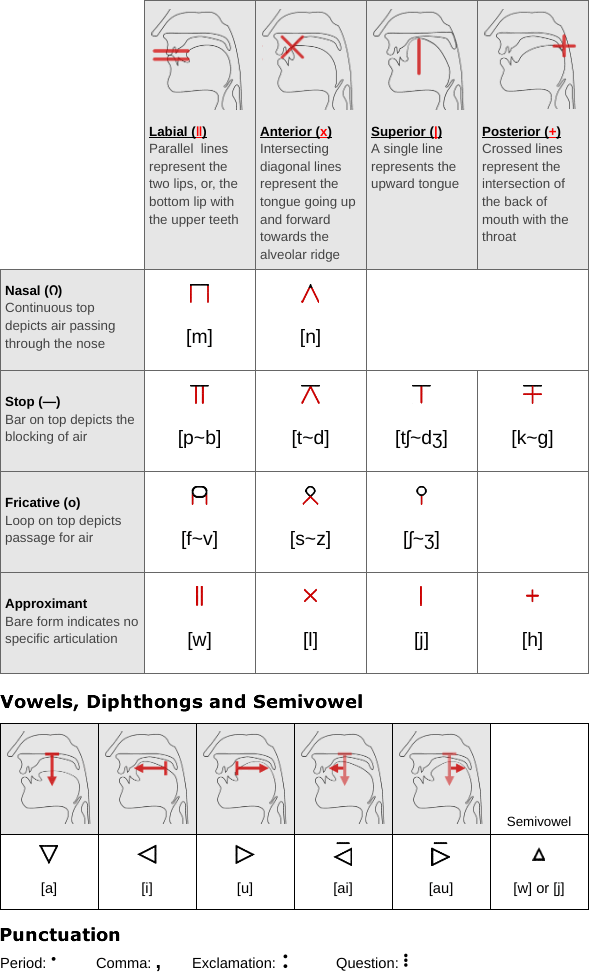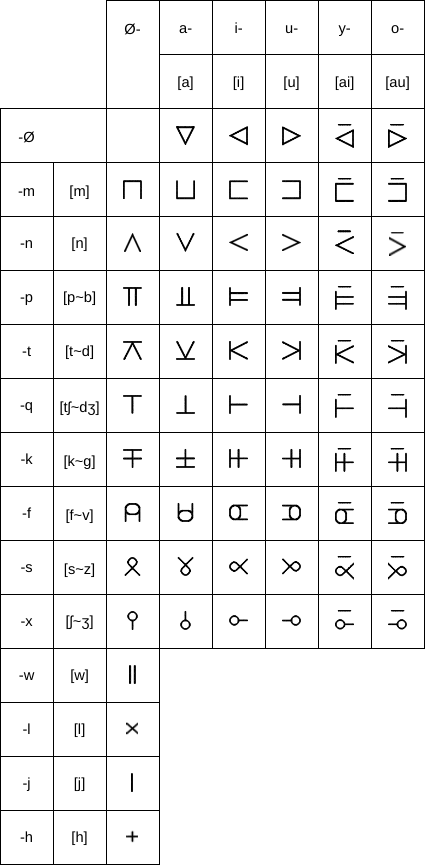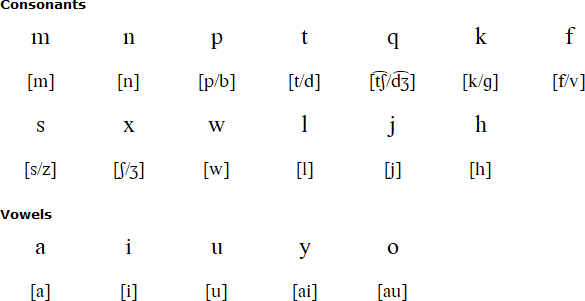![]()
The Wiqa ([ˈwi:tʃʌ]) script was created in 2023 by Scott Printz to write his conlang of the same name. It was inspired by Hangul, Canadian Aboriginal Syllabics and human speech anatomy.
Wiqa is unusual in how it divides syllables. Unlike most abugidas, in which consonant-vowel units represent consonants followed by vowels (CV), Wiqa symbols represent a vowel preceding a consonant (VC). This feature is ideally suited for the polysynthetic Wiqa language as most morphemes begin with a vowel and end with a consonant. This unusual onset-rime arrangement is shared with the Khom and Zhuyin Fuhao scripts.



![]()
wiqa sumihjupa ytu, akika usula koqinuskwistax.
Though they don't share words, the chicken and the fox understand each other.
Constructed scripts for: Ainu | Arabic | Chinese languages | Dutch | English | Hawaiian | Hungarian | Japanese | Korean | Lingala | Malay & Indonesian | Persian | Tagalog / Filipino | Russian | Sanskrit | Spanish | Taino | Turkish | Vietnamese | Welsh | Other natural languages | Colour-based scripts | Tactile scripts | Phonetic/universal scripts | Constructed scripts for constructed languages | Adaptations of existing alphabets | Fictional alphabets | Magical alphabets | A-Z index | How to submit a constructed script
[top]
You can support this site by Buying Me A Coffee, and if you like what you see on this page, you can use the buttons below to share it with people you know.

If you like this site and find it useful, you can support it by making a donation via PayPal or Patreon, or by contributing in other ways. Omniglot is how I make my living.
Note: all links on this site to Amazon.com, Amazon.co.uk
and Amazon.fr
are affiliate links. This means I earn a commission if you click on any of them and buy something. So by clicking on these links you can help to support this site.
[top]